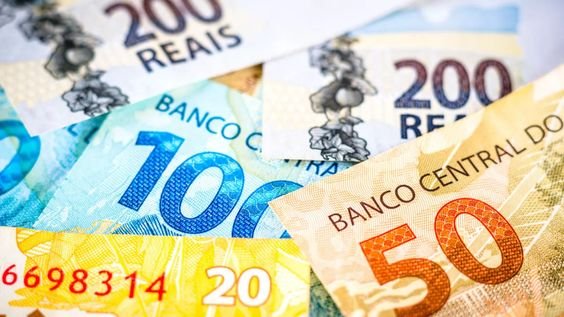Volatility is a fundamental concept in the world of finance, and its understanding is crucial for both traders and investors. Two commonly referenced types of volatility are High Volatility (HV) and Implied Volatility (IV). Although both pertain to the price movement of assets, they serve different purposes and are used in varying contexts. This article explores the concepts of HV and IV, their differences, and how they are applied in the stock and cryptocurrency markets.
What is High Volatility (HV)?
Definition and Characteristics
High Volatility (HV) refers to a state in the market where an asset experiences significant price fluctuations within a short period. This can be measured using statistical metrics such as the standard deviation of returns or the historical range of prices. HV is often observed in markets that are influenced by external events like economic data releases, geopolitical tensions, regulatory changes, or earnings announcements.
An asset with high volatility is considered riskier because its price is less predictable and can change rapidly. This unpredictability creates opportunities for traders looking to profit from price swings, but it also poses risks, as the asset can move sharply against positions.
Causes of High Volatility
High volatility in an asset’s price can result from several factors:
- Market Sentiment: Investor sentiment can drive HV, especially in response to news events, company earnings, or macroeconomic data.
- Liquidity: Assets with low liquidity often have higher volatility. A small number of trades can cause significant price movements in these markets.
- Economic and Political Events: Changes in interest rates, inflation data, or geopolitical tensions can lead to sudden shifts in price, contributing to HV.
- Market Structure: High volatility is often observed in markets with less regulation or transparency, such as the cryptocurrency market, where speculative trading is more prevalent.
- External Shocks: Unexpected events such as natural disasters, pandemics, or regulatory crackdowns can cause market prices to fluctuate wildly.
Measuring High Volatility
High volatility is typically measured using historical data, which involves calculating the standard deviation of asset returns over a certain period. A higher standard deviation indicates higher volatility. Other indicators such as the Average True Range (ATR) or Bollinger Bands are also used to measure HV in technical analysis.
What is Implied Volatility (IV)?
Definition and Characteristics
Implied Volatility (IV) is a forward-looking measure that reflects the market’s expectations for future volatility. Unlike HV, which looks at past price movements, IV is derived from the prices of options contracts on a given asset. It represents the market’s anticipation of how much the asset’s price will move over a specified period.
IV is an essential component in the pricing of options. It helps traders gauge the level of risk in the market and predict future price movements based on the demand for options. When options prices are high, it indicates that the market expects higher future volatility, and hence, IV will be higher.
How Implied Volatility is Calculated
Implied Volatility is not directly observable; it is extracted using mathematical models such as the Black-Scholes option pricing model. The calculation involves solving for the volatility input that equates the theoretical price of the option to the current market price. The resulting figure is the IV, which provides insight into the market’s outlook on future price swings.
Factors Influencing Implied Volatility
- Demand for Options: Increased demand for options—whether calls or puts—raises the IV. This typically happens when traders expect significant price movements.
- Market Events and Announcements: Anticipation of earnings announcements, economic data releases, or product launches can increase IV as the market braces for potential price swings.
- Market Sentiment: If traders expect a period of high volatility, IV will rise even if the actual price movement of the underlying asset remains steady.
- Time to Expiry: Options with longer expiration dates typically have higher IV because more time introduces greater uncertainty.
Uses of Implied Volatility
- Options Pricing: IV is a critical input in options pricing models and helps determine the fair value of an options contract.
- Risk Management: IV provides a measure of market risk and can help traders manage their exposure.
- Market Sentiment Analysis: A rising IV can indicate that traders expect significant price movement, while a falling IV suggests a calmer market.
High Volatility (HV) vs. Implied Volatility (IV)
Although both HV and IV are related to the concept of price movement, they have distinct differences in their calculation, interpretation, and application.
| Aspect | High Volatility (HV) | Implied Volatility (IV) |
|---|---|---|
| Definition | Measures past price movement and fluctuations. | Reflects market expectations for future price movement. |
| Calculation | Based on historical data and statistical metrics. | Derived from options pricing models like Black-Scholes. |
| Nature | Backward-looking; measures what has happened. | Forward-looking; anticipates what may happen in the future. |
| Usage | Helps gauge historical risk and price fluctuations. | Used in options pricing and to gauge market sentiment. |
| Source of Information | Historical price data. | Market prices of options contracts. |
| Application | Useful in risk assessment and portfolio management. | Crucial for options traders and risk management strategies. |
Application of HV and IV in Stock Markets
High Volatility in Stock Markets
High volatility in the stock market is often associated with periods of uncertainty or heightened activity. For example, earnings season typically sees increased volatility as companies report their financial results, which can lead to significant price movements.
- Trading Opportunities: Day traders and swing traders often seek out high-volatility stocks because rapid price movements can create opportunities for profit within short time frames.
- Risk Management: Investors and portfolio managers use HV to assess the risk associated with holding a particular stock or sector, adjusting their positions accordingly.
- Volatility Index (VIX): In the U.S. stock market, the VIX, often referred to as the “Fear Gauge,” measures the implied volatility of S&P 500 options. A rising VIX indicates increased HV and a market expectation of turbulence.
Implied Volatility in Stock Markets
Implied Volatility plays a crucial role in options trading. It helps options traders decide whether to buy or sell options based on their expectations of future price movements.
- Options Pricing: When IV is high, options prices are more expensive, which means the market expects significant future movements. Traders might buy options to hedge against expected volatility or to speculate on future price direction.
- Earnings Announcements: IV usually spikes before a company’s earnings report as traders anticipate sharp price movements. After the earnings release, IV often drops—a phenomenon known as the “IV crush.”
Application of HV and IV in Cryptocurrency Markets
The cryptocurrency market is notorious for its high volatility due to factors like low liquidity, speculative trading, and regulatory uncertainty. Both HV and IV are crucial metrics for understanding and navigating the crypto market.
High Volatility in Cryptocurrencies
Cryptocurrencies like Bitcoin and Ethereum experience high volatility due to their nascent stage and lack of widespread adoption. High volatility in crypto markets is often caused by:
- Market News and Sentiment: Announcements like regulatory decisions, partnerships, or technological upgrades can cause significant price swings.
- Whale Activity: Large holders of cryptocurrencies (whales) can significantly influence prices through large trades, causing spikes in volatility.
- Speculative Nature: Many traders in crypto markets are short-term speculators, leading to exaggerated price movements in response to market events.
Implied Volatility in Cryptocurrencies
Implied Volatility in the crypto market is primarily derived from options trading on platforms like Deribit and LedgerX. It provides insights into market expectations and helps traders price their options contracts.
- Market Sentiment Indicator: Like in the stock market, rising IV in crypto options suggests that traders expect increased price swings, often due to upcoming events like protocol upgrades or forks.
- Risk Management: Traders use IV to gauge the level of risk in the market and to decide whether to buy or sell options based on their outlook.
Practical Considerations and Strategies Using HV and IV
Strategies for High Volatility
- Scalping and Day Trading: Traders can capitalize on sharp price movements by entering and exiting positions quickly.
- Protective Put Options: In a high-volatility environment, investors can purchase protective put options to hedge against potential downside risks.
Strategies for Implied Volatility
- Straddle and Strangle Strategies: Options traders can use these strategies to profit from expected high volatility by buying calls and puts simultaneously.
- IV Crush Plays: Experienced traders may capitalize on the IV crush by selling options right before an earnings report or significant event, as IV typically drops sharply post-event.




